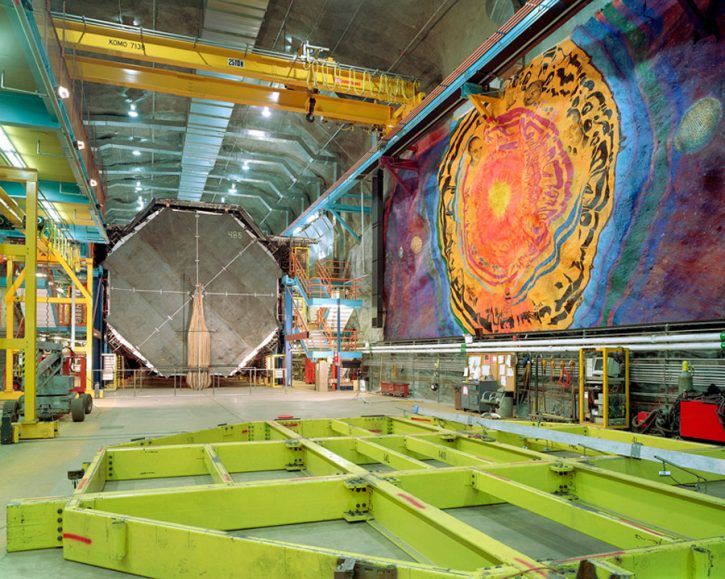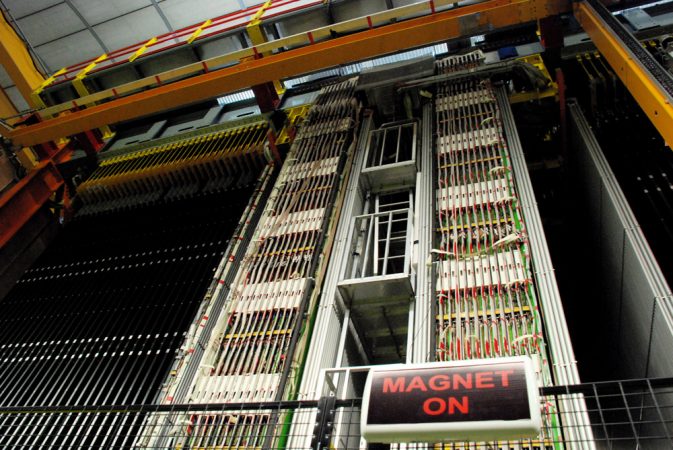Too fast to be true
Human error, not new physics, may explain surprising speeds of tiny neutrinos

minos1
Last September, scientists working on an Italian experiment called OPERA reported a measurement that seemed too amazing to be true. Their finding involved neutrinos, supersmall and ultrafast particles that can travel through almost anything without stopping. The scientists measured the speeds of neutrinos that zipped from one underground laboratory to another and reported that the zippy little particles traveled faster than light. In November, they repeated the experiment and got the same results.
Those results both excited and troubled scientists. The speed of light is thought to be a universal speed limit, which means nothing should move faster through space. If neutrinos can move faster than the speed of light, then many ideas about space, time and the nature of the universe might be wrong. The OPERA results meant either our understanding of science is based on an error or something went wrong with the experiment.
The explanation, as it turns out, has more to do with broken machinery than breaking the laws of physics.
At a press conference in February, the OPERA scientists reported that a loose cable probably caused a mistake in the measurement, which would mean the neutrinos did nothing unnatural after all. Traveling through the ground, the neutrinos sped from a laboratory on the France-Switzerland border to another in Italy. The faulty cable carried a signal to the main clock that timed the neutrinos, but a loose connection kept the cable from doing its job accurately.
“We should have been more cautious in the way we framed the results,” physicist Luca Stanco told Science News. Stanco works on OPERA at the National Institute of Nuclear Physics in Padua, Italy. “Now we are a little embarrassed.”
Physicists belong to a class of scientists who study motion, matter and energy.
From the first announcement of the superluminary neutrinos, many scientists expressed their doubts. Boston University physicist Sheldon Glashow was one of the early skeptics.
“It was always clear to me that the results could not have been true,” he told Science News.

The OPERA scientists are preparing to repeat the experiment, after making sure that all cable connections are secure and functioning. Those researchers in Italy are not the only physicists trying to time neutrinos. In the United States, scientists involved in a related experiment known as MINOS will measure the whisperlike particles as they zoom from the Chicago area to a lab in Minnesota.
Though the particles may not be able to outpace light, they still interest scientists because neutrinos stream through space without colliding with anything. In fact, in the time it takes you to read this sentence, billions have probably sped right through your body.
“Neutrinos are one of the most common particles in the universe, but in some ways one of the hardest to capture,” neutrino hunter Jim Madsen, from the University of Wisconsin-River Falls, told Science News for Kids in 2008.
POWER WORDS (Adapted from the New Oxford American Dictionary)
physics the branch of science concerned with the nature and properties of matter and energy. The subject matter of physics, distinguished from that of chemistry and biology, includes light and other radiation, mechanics, heat, sound, electricity, magnetism and the structure of atoms.
neutrino A subatomic particle with a mass close to zero. Neutrinos rarely react with normal matter. Three kinds of neutrinos are known.
subatomic particle A particle smaller than an atom.
particle A tiny bit of matter.
superluminary Faster than light.







